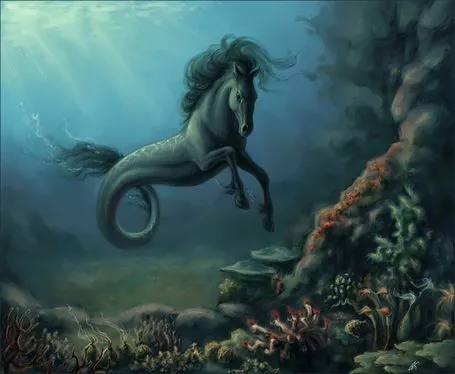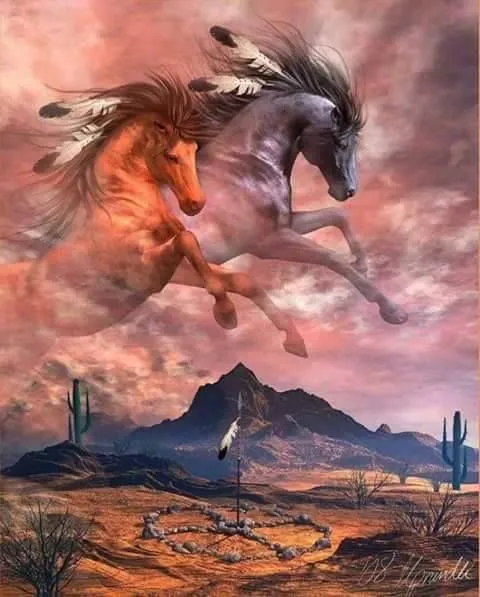
Celtic Water Horses
A Celtic Water Horse
In Celtic myth, water horses (called "Kelpies") roamed Scottish and Irish rivers, appearing at unpredictable moments.
The word Kelpie come from the Gaelic word cailpeach or colpach meaning heifer or colt
In the Irish and Scottish lore, water horses have black manes, with two identifying characteristics: Its mane constantly drips no matter its location and its skin is always freezing cold. Its skin is described as being smooth like that of a seal.
Kelpies have the ability to transform into other forms. In myths relating to men, Kelpies often ap pear first as breathtaking women, convincing men to follow them and later taking their lives in a trap.
In one troubling legend, the Kelpie attracts chil dren and beckons them to ride on its back. Once the child agrees to do so, the Kelpie's skin becomes
Ghost Horse of the Plains He was claimed to be superior to all others.
Some storytellers say he moved like a white shadow, like a Spirit Horse. He was revered as strong medicine. In 1879, a reward was offered for his capture.
Indians called him Ghost Horse. Winged Steed of the Prairies. This ghost horse was sighted from Mexico, to Oklahoma, from Washita to South Canada.
He was finally caught by a vaquero after a band of professional mustangers chased him for 200 miles. When he was roped and staked, he refused grass or water. After ten nights, the proud stallion laid down and died.
Indian Spirit Horses
Still, he was sighted again and again after his death, slipping in and out of the mist from the Rio
